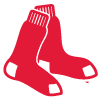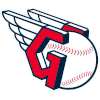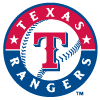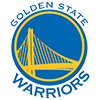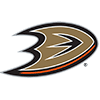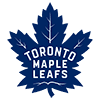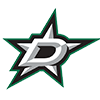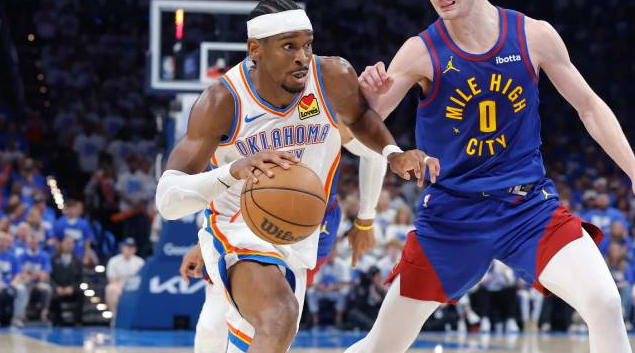Percentages are key: especially from the line
Almost a decade ago, I played in my first RotoWire rotisserie league and got second place. The winner of that league was Chris Liss, who loved rubbing his victory in my face. One thing he said stuck with me: "It is more important to have good percentages (FG% and FT%) on your team, especially early in the season, than it is to be good in every volume category." And this is why:
In rotisserie basketball, everyone starts off the year expecting to win. They come out of the draft excited about their squads, and for the first month or two of the season, they check in often and make all of the moves to give their teams a chance to win. But by the time you get to about February, the writing starts to appear on the wall that some teams just aren't going to compete for the title. And suddenly, mysteriously, some of the owners of those teams just disappear. They stop checking their teams, they stop picking up new players or trading, and they stop setting their lineups. When this happens, these owners start falling to the back of the standings across the board. See, they may have been in last before, but there were likely some categories that they were doing ok in. Once they stop setting their lineup, all of their counting category stats start falling, and any owner behind them in those categories can shoot by them. This
Percentages are key: especially from the line
Almost a decade ago, I played in my first RotoWire rotisserie league and got second place. The winner of that league was Chris Liss, who loved rubbing his victory in my face. One thing he said stuck with me: "It is more important to have good percentages (FG% and FT%) on your team, especially early in the season, than it is to be good in every volume category." And this is why:
In rotisserie basketball, everyone starts off the year expecting to win. They come out of the draft excited about their squads, and for the first month or two of the season, they check in often and make all of the moves to give their teams a chance to win. But by the time you get to about February, the writing starts to appear on the wall that some teams just aren't going to compete for the title. And suddenly, mysteriously, some of the owners of those teams just disappear. They stop checking their teams, they stop picking up new players or trading, and they stop setting their lineups. When this happens, these owners start falling to the back of the standings across the board. See, they may have been in last before, but there were likely some categories that they were doing ok in. Once they stop setting their lineup, all of their counting category stats start falling, and any owner behind them in those categories can shoot by them. This doesn't work in the percentage categories, though, because even if someone stops setting their lineups, the percentages don't really fall much. Thus, if you're an owner still paying attention, you can always make a late season run in the counting categories by catching the teams in front of you that stop paying attention, but you can't do the same in the percentages.
And that is why it's better to have strong percentages than it is to have strength in any two counting categories. I've told this anecdote in the past, and have paid much more attention to my percentage categories since then. But I want to take it further because, even between the shooting categories, one of them stands out as more important than the other. To illustrate, let's look at two examples from Tuesday night's Rockets vs. Lakers game.
On Tuesday, Dwight Howard went 4-of-9 from the field and 8-of-16 from line. James Harden, on the other hand, went 3-of-19 from the field and 9-of-11 from line. While going 8-of-16 from the line sounds bad, at first glance it seems much worse to me to shoot 3-of-19. I mean really, you are very rarely ever going to see a worse shooting display from the field than 3-of-19. So obviously, in the vein of the importance of shooting percentages, we'd expect that Harden would have been worse for our fantasy teams that night than Howard, right? Wrong. Let's do some rough math to see why.
In general, fantasy teams are going to have roughly twice as many field goals made (FGM) as free throws made (FTM) in any given period. Likewise, those teams are likely to register somewhere around 3.5 times as many field goal attempts (FGA) as free throw attempts (FTA) over that same period. This usually results in the average fantasy team shooting in the upper 70-percent range from the line and in the mid-40-percent range from the field. Numerically, then:
1.0 FTA translates to about 3.5 FGA.
1.0 FTM translates to about 2.0 field goals made FGM.
So, if Howard goes 8-of-16 from the line, for Harden to have an equivalently bad impact on his team's field goal percentage he would have to go 16-for-56 from the field (8*2 = 16 FG made in 16*3.5 = 56 attempts). Yes, you read that right. Harden's 3-of-19 shooting from the field was relatively meaningless compared to Howard's 8-of-16 from the line. In fact, Harden could have gone another 13-for-37 from the field on Tuesday and still only equaled Howard's negative impact on a roto team's free throw percentage. It's not just the poor percentage, but the sheer volume of free throws that does the damage. And while it's rare for anyone to go even 3-of-19 from the field in a given game (let alone 16-for-56), Howard almost averages 8-of-16 from the line every game (actually 5.2/11.1 for 46.9%).
With that in mind, it's legitimate to ask whether Howard is even rosterable in rotisserie leagues this year. In the past, Howard had the kind of outlier stats in rebounds that I argued last week made Kevin Love special. This year, Howard is only averaging 11 boards per game next to Pau Gasol. His 18.5 points are relatively pedestrian among impact players. His 2.8 blocks per game and 59% FG are nice, very nice even, but not special enough to give you a marked edge in those categories. Considering that Howard's mere presence on your team guarantees that you lose a category, and the category that could be one of the most important ones to win according to the logic given above…again, I don't even think I want Howard on my roster. So, while I'd still like to have Howard in head-to-head leagues where I could get away with punting a category, I would absolutely trade Howard today in a competitive roto league. I wouldn't even hold out for maximum value for him. I'd get as much as I could, but Howard would have to be off of my roto team before the week was out. Because every game, his presence would be doing damage, that's extremely difficult to overcome, to my chances to win the title.
In fairness, the other side of the coin is: If Howard kills your chances from the line, who are the players that can help? Well, like last week, I have to refer to the change in the NBA handcheck rules after the 2004 season that have completely changed the game. These days, an aggressive wing that can get to the rim is going to shoot video game numbers of bulk free throws compared to what we saw before the rule change. Don't believe me? Check out the numbers for the top-5 players in free throws made in 2004 (last year pre-change) vs. in 2011 (last full non-lockout season):
In 2003-04, only six players had more than 400 made free throws on the season. The top-5 had a total of 2316 made free throws, an average of 463.2 made free throws each.
In 2010-11, there were six players with more than 500 made free throws and 12 with more than 400. The top-5 had a total of 2772 made free throws, an average of 554.4 each.
That is almost a 20 percent increase in made free throws at the top since 2004. So, we're talking big differences. Your top volume free throw shooters these days can make a big difference to your bottom line.
Thus far this season, Kevin Durant and James Harden are the best free throw influences, both on pace for more than 600 made free throws at well over an 80-percent clip (Durant up over 90%). Kobe Bryant, Carmelo Anthony, Paul Pierce, Kyle Lowry, Chris Bosh, and Ramon Sessions are also on a pace for more than 400 made free throws at over 80 percent. Love is on pace for more than 500 FTs made, but his early FT% is hurting a bit at 65 percent. Love is a career 82 percent shooter from the line, and he's just knocking the rust off right now after his injury. So, if he recovers, he should also be a great positive on your free throw percentage.
Around the League:
Kobe 30k: On Wednesday, Kobe Bryant became only the fifth player in NBA history to score 30,000 points in his career, joining Kareem Abdul-Jabbar, Karl Malone, Michael Jordan, and Wilt Chamberlain. Perhaps the most impressive part of this accomplishment is that Bryant did it in his 17th NBA season with a 29-point effort as part of his yearly average of 28 points per game. I may not think that this makes Kobe one of the five best players in NBA history (I have him more in the top-15 range) or even the best Laker (give me Magic), but it's still a huge accomplishment and a testament to him playing at a very high level for a very long time. Respect.
Varejao the roto superstar: OK. I fought the good fight. When Anderson Varejao came out the gates with a 23-rebound effort in the season opener, I noted that he might average more than 11 boards per game but that he was still just a very good roto role player. When he dropped 35 and 18 a few weeks later I acknowledged that he seemed to keep hitting the "video game stats" button and that he might average a teen/teen double-double which made him an impact player but not necessarily in the elite. But now? Varejao is the real deal, a veritable roto superstar. He has grabbed at least 15 rebounds in 10 straight games, is a legit 15-18 point scoring threat, is putting up impressive numbers of steals, and is shooting solidly from the field and the line. I give up. Varejao finally has the box score numbers to match the sneaky plus/minus impact numbers he's shown glimpses of the last several years. He's in my top-20 in the rankings for the RotoWire Cheat Sheet right now, and I don't see him falling anytime soon.
Anderson one too: The "Other Anderson" is also balling right now. Ryan Anderson has proven that he wasn't just making all of those threes by playing off of Dwight Howard. He's taken over as the go-to scorer with Anthony Davis injured, averaging almost 25 points and nine boards with more than three three-pointers over the last week.
Love still not right: A week after I gushed over Kevin Love in the Lab, calling him a mix between the best parts of both of the Andersons mentioned above, I have to acknowledge that his shooting stroke still hasn't fully returned after his hand injury. At this point, I wouldn't worry, as his lack of treys and poor percentages can still legitimately be chalked up to rust, but if Love can't find his stroke over the long run that would certainly be a big blow to his roto elite status.
Jefferson's back:Al Jefferson came down awkwardly after fighting to pull down a rebound Wednesday night, and is now questionable for Friday's game with a back injury. He is arguably the best of Utah's glut of big men, and the timing of his injury actually works out ok because his main young competition (Derrick Favors) is also nursing an injury (plantar fasciitis) at the moment making it less likely that Favors will Kaepernick Jefferson.
Resting Spurs: Coach Gregg Popovich got placed in David Stern's doghouse when he sat Tim Duncan, Manu Ginobili, and Tony Parker for last Thursday's TNT game vs. the Heat. Stern hit the Spurs with public criticism and fined the team hundreds of thousands of dollars for the transgression. But at the end of the day, I don't think Popovich cares. He wants his older team to be rested and healthy, and that's worth more to him than a few hundred grand. Look for Duncan, Ginobili, and Parker to miss several more games before the season is over.
New Additions
Larry Sanders (57% owned in Yahoo! Leagues): In my first New Additions of the season Sanders was only owned in 26% of leagues, and I pointed out that he was a nightly double-double threat that could block three shots a game. A month later he's somehow still un-owned in 43% of the leagues despite having 24 blocks in his last three games. The window to get him cheap is slamming shut, so if he's available in your league, please snatch him up.
Antawn Jamison (53% owned): Last week I pointed out that the Lakers have an ideal D'Antoni style power forward on the team, and it's not Pau Gasol. Jamison is just the kind of undersized shooter-scorer that Coach Mike D'Antoni loves, and he was getting close to 30 minutes per night even before Gasol went down. Jamison has 12 treys in his last four games, and has mid-teen points with seven boards and two three-pointer potential if he continues to get the playing time.
Ben Gordon (48% owned): Gordon has been pretty consistent with averages of 15.1 points and 2.5 threes per game on the season. Surprisingly, he's also showing well from the field at 45.2 percent. His role in Charlotte seems to agree with him much more than his role in Detroit ever did.
Robin Lopez (44% owned): At some point, Anthony Davis is going to come back, but Lopez is still worth a roster spot in deeper leagues. He's shown that he can be a fantasy impact player when given minutes, and Davis has not shown any indication that he can keep himself on the court long term.
Alexey Shved (19% owned): Even though Kevin Garnett is now in Boston, I still pay attention to the Timberwolves and hang out on their message boards every so often. Wolves fans have been excited about Shved for awhile, and now the general public is getting to see why. He's scored in double-digits in four straight games, a stretch in which he has averaged 15.3 points and 3.3 treys.
Keeping up with the Professor
If you're interested in my takes throughout the week, you can follow me on Twitter @ProfessorDrz. Also, don't forget that you can catch me on the radio on RotoWire Fantasy Sports Today with Chris Liss and Jeff Erickson on XM 87, Sirius 210.











